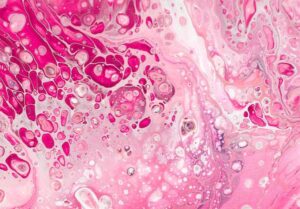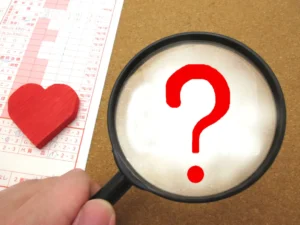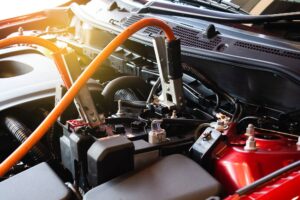Last Updated on 2 years ago by Nicky Johnson
Efficient water management is crucial for businesses in the UK. Not only does it help control costs, but it also promotes sustainability and environmental responsibility.
Understanding the structure of your business water bill is the first step toward efficient water management.
In this article, we will break down the components of a typical UK business water bill and provide practical tips to help you master your water usage and reduce expenses.

Understanding Your Business Water Bill
Blog Contents
- Understanding Your Business Water Bill
- Identifying Water Consumption Patterns
- Water Conservation Strategies
- Leak Detection and Repair
- Engaging with Water Efficiency Programs and Incentives
- Monitoring and Benchmarking Progress
- Water Management Training and Education
- Rainwater Harvesting and Greywater Recycling
- Water Audit and Consultation Services
- Collaboration and Industry Partnerships
- Data Analysis and Continuous Improvement
- Conclusion
When analyzing your business water bill, it’s essential to grasp the various charges and components included.
A typical UK business water bill consists of standing charges, volumetric charges, and sewerage charges.
The standing charges are fixed costs that cover the maintenance and infrastructure of the water supply network. Volumetric charges are based on the amount of water used, measured in cubic meters.
Sewerage charges reflect the cost of treating and disposing of wastewater. By familiarizing yourself with these components, you can better understand the breakdown of your bill.
Identifying Water Consumption Patterns
Monitoring your water usage is key to identifying areas where efficiency can be improved. Consider implementing smart metering or sub-metering systems to accurately track consumption patterns.
This data will allow you to identify peak usage periods, detect leaks, and identify areas where water-saving measures can be implemented.
Analyzing consumption patterns helps you make informed decisions about water usage reduction strategies.
Water Conservation Strategies
Implementing water-saving practices is an effective way to reduce your water bill and minimize environmental impact.
Consider installing low-flow fixtures, such as aerated faucets and dual-flush toilets, to reduce water consumption.
Educate your employees about the importance of water conservation and encourage them to adopt water-saving habits, such as reporting leaks promptly and turning off taps when not in use.
Additionally, implementing water-efficient practices in common areas, restrooms, and kitchens can significantly contribute to overall water savings.
Leak Detection and Repair
Water leaks can lead to substantial water and financial losses. Regularly inspect your premises for leaks and promptly address any issues. Look for signs of dampness, water stains, or unusual water meter readings.
Conduct routine maintenance and promptly repair or replace faulty equipment to prevent leaks. By taking a proactive approach to leak detection and repair, you can save both water and money.
Engaging with Water Efficiency Programs and Incentives
Many water suppliers and government organizations offer water efficiency programs and incentives to businesses.
These programs often provide guidance, support, and financial incentives for implementing water-saving measures.
Research and explore the water efficiency schemes available in your region, as they can help you reduce water consumption and save on your water bills.
Monitoring and Benchmarking Progress
Monitoring your water usage and tracking bill trends is essential to gauge the effectiveness of your water management efforts.
Utilize benchmarking tools to compare your water consumption against industry standards and identify areas for improvement.
Set realistic water reduction goals and regularly review your progress to ensure continuous improvement.
Water Management Training and Education
Investing in water management training and education can empower your employees to make informed decisions regarding water usage.
Conduct workshops or training sessions to raise awareness about water conservation practices and provide guidance on how to effectively manage water in the workplace.
Educate staff members on the importance of water efficiency, how their actions impact the water bill and practical steps they can take to minimize waste.
By fostering a culture of water consciousness within your organization, you can achieve long-term sustainable water management.
Rainwater Harvesting and Greywater Recycling
Consider implementing rainwater harvesting and greywater recycling systems in your business premises. Rainwater can be collected and stored for non-potable uses, such as irrigation or toilet flushing.
Greywater, which includes water from sinks, showers, and laundry, can be treated and reused for certain applications.
These systems reduce reliance on the mains water supply and can lead to significant water savings.
Evaluate the feasibility of these solutions for your business and explore any local regulations or incentives that may support their implementation.
Water Audit and Consultation Services
Engaging the services of a water audit or consultation company can provide valuable insights into your water usage and identify areas for improvement.
These professionals can conduct detailed assessments of your premises, equipment, and processes to uncover inefficiencies and recommend tailored water-saving measures.
A water audit report can help you prioritize water management initiatives and guide your efforts toward maximum efficiency and cost reduction.
Collaboration and Industry Partnerships
Collaboration with industry partners, suppliers, and other businesses can foster innovation and knowledge sharing in water management.
Join industry networks or associations dedicated to sustainable water practices to stay informed about the latest trends and technologies.
Collaborate with suppliers to explore joint initiatives aimed at water conservation and efficiency.
By working together with like-minded organizations, you can collectively address water challenges, leverage resources, and achieve more significant results in managing your water bills.
Data Analysis and Continuous Improvement
To achieve long-term success in efficient water management, it is essential to analyze data and continuously improve your strategies.
Regularly review your water consumption data, bill trends, and the effectiveness of implemented measures. Identify areas where further optimization is possible and adjust your water management plans accordingly.
Consider utilizing water management software or tools that provide real-time monitoring and analysis of water usage data. Use this data to set new goals, track progress, and make informed decisions about future water management initiatives.
By adopting a data-driven approach and embracing a culture of continuous improvement, you can ensure ongoing efficiency and cost savings in your business water management practices.
Conclusion
Mastering your UK business water bill requires a comprehensive approach that includes understanding bill components, identifying consumption patterns, implementing water-saving strategies, promptly addressing leaks, engaging with water efficiency programs, monitoring progress, providing training and education, exploring alternative water sources, seeking professional advice, fostering collaboration, and analyzing data for continuous improvement.
By embracing these strategies, businesses can optimize water usage, reduce costs, and contribute to a sustainable future while demonstrating corporate social responsibility. Embrace efficient water management practices, leverage available resources, and strive for continuous improvement in your business water management efforts.







